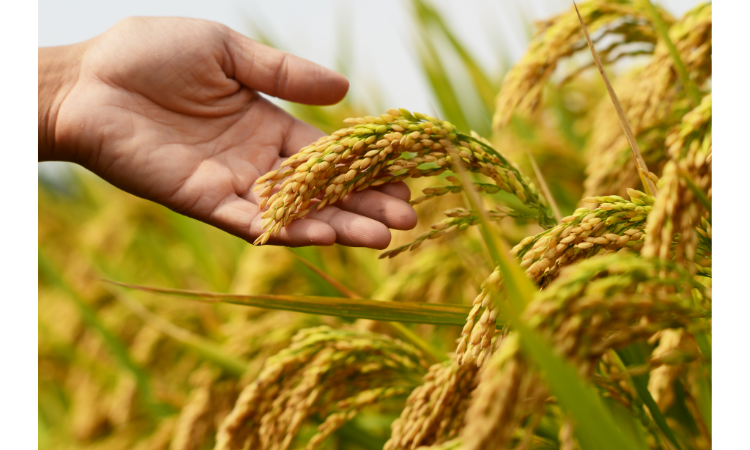The world of rice is vast and diverse, with over 40,000 different varieties. Among these, a hidden gem is slowly gaining global recognition – Hassawi rice. Originating from the fertile lands of the Al-Ahsa region in Saudi Arabia, this unique and traditional variety of rice has been cultivated for centuries. With its distinct characteristics, rich history, and versatile culinary applications, Hassawi rice offers a taste of the Middle East that’s both fascinating and delicious. In this guide, we will delve into the world of Hassawi rice, exploring its origin, cultivation process, nutritional benefits, and much more. So, let’s embark on this flavorful journey and discover the treasure of the Al-Ahsa region!
The History and Origin of Hassawi Rice

- A Glimpse into the Past
The story of Hassawi rice begins in the Al-Ahsa region of Saudi Arabia, a land known for its abundant water, fertile soil, and favorable climate. This region has been cultivating rice for centuries, with Hassawi rice being a primary staple. The cultivation of this variety dates back to ancient times, and it has been passed down through generations of farmers who have preserved its unique qualities.
- The Al-Ahsa Oasis: The Birthplace of Hassawi Rice
The Al-Ahsa Oasis, a UNESCO World Heritage site, is the birthplace of Hassawi rice. This oasis boasts a rich and diverse agricultural landscape, with more than 2.5 million date palms and an extensive network of springs and canals. The oasis provides the ideal environment for growing Hassawi rice, which thrives in the region’s unique climate and fertile soil.
Cultivating Hassawi Rice: A Labor of Love

- Planting and Growing Hassawi Rice
Hassawi rice is typically sown in late spring, taking advantage of the warm temperatures and long daylight hours. Farmers use traditional methods, such as direct seeding or transplanting seedlings, to grow the rice. Hassawi rice is known for its adaptability, with the ability to withstand high salinity levels and drought conditions that are common in the region. This resilience makes it a sustainable and reliable crop for local farmers.
- Harvesting Hassawi Rice
Harvesting Hassawi rice is a labor-intensive process that typically takes place in late summer or early autumn. Farmers carefully monitor the rice fields to determine the optimal time for harvest, looking for signs such as golden-hued grains and a slightly brittle texture. Once the rice is ready, it is carefully harvested by hand or using machinery to minimize damage to the delicate grains.
- Processing and Milling Hassawi Rice
After harvesting, Hassawi rice undergoes several processing steps to remove the husk, bran, and germ layers, resulting in polished white rice. This process involves drying, dehusking, milling, and finally, polishing the grains to reveal their characteristic elongated shape and pearly white appearance.
Nutritional Benefits of Hassawi Rice

- A Source of Essential Nutrients
Hassawi rice is a good source of carbohydrates, proteins, and essential minerals, such as calcium, potassium, and magnesium. It also contains a moderate amount of dietary fiber, which can promote digestive health and contribute to a balanced diet.
- Antioxidant Properties
Some studies have shown that Hassawi rice contains various antioxidants, including phenolic compounds, which can help protect the body from oxidative stress and reduce the risk of chronic diseases. These antioxidants may also contribute to the rice’s unique flavor and aroma.
Culinary Applications of Hassawi Rice

- Traditional Saudi Arabian Dishes
Hassawi rice is a staple ingredient in many traditional Saudi Arabian dishes. Its mild flavor, unique aroma, and slightly sticky texture make it ideal for absorbing spices and sauces. Some popular dishes that feature Hassawi rice include:
Kabsa: A fragrant rice dish made with a mix of spices, vegetables, and meat (usually chicken, lamb, or fish). The rice is cooked in a rich, aromatic broth that imparts deep flavors to the grains.
Saleeg: A creamy, porridge-like dish made by simmering Hassawi rice in milk or a mix of milk and water. Often flavored with cardamom, cinnamon, and sugar, Saleeg is a comforting and delicious dessert or breakfast dish.
- Hassawi Rice in International Cuisine
As Hassawi rice gains popularity worldwide, chefs and food enthusiasts are discovering its versatile culinary applications. Its unique characteristics make it suitable for a variety of dishes, including:
Pilafs and Biryani: Hassawi rice can be used as a base for flavorful pilafs or biryani, absorbing the rich flavors of spices, herbs, and meats.
Rice Salads: The slightly sticky texture of Hassawi rice makes it an excellent choice for rice salads, as it holds up well when mixed with vegetables, proteins, and dressings.
Rice Puddings and Desserts: The natural creaminess of Hassawi rice lends itself well to rice puddings and other sweet dishes, providing a delightful texture and flavor.
Hassawi Rice Price and Availability

- How Much Does Hassawi Rice Cost?
The price of Hassawi rice can vary depending on various factors such as the region, brand, and quality of the rice. In general, Hassawi rice is considered a premium rice variety and is priced higher than other rice varieties. In Saudi Arabia, the price of Hassawi rice can range from 25 SAR to 30 SAR or USD 6 to USD 8 per kilogram.
Outside of Saudi Arabia, the price of Hassawi rice can vary depending on import and export fees, shipping costs, and other factors. In some countries, Hassawi rice is sold at a premium price due to its unique flavor and texture. It’s important to note that the price of Hassawi rice may also be influenced by market demand and supply.
Overall, Hassawi rice may be more expensive than other rice varieties, but its unique flavor and nutritional benefits make it a worthwhile investment for those who value quality and taste in their food.
- Where to Buy Hassawi Rice
As Hassawi rice gains recognition globally, it is becoming more readily available in supermarkets, specialty grocery stores, and online retailers. When shopping for Hassawi rice, look for reputable brands and suppliers to ensure you are purchasing a high-quality product.
Conclusion
Hassawi rice is a true treasure of the Al-Ahsa region, offering a rich history, unique characteristics, and versatile culinary applications. From its origin in the fertile lands of Saudi Arabia to its growing popularity worldwide, this ancient grain has captivated food enthusiasts and chefs alike. Whether you’re looking to try a traditional Saudi Arabian dish or experiment with new flavors and ingredients, Hassawi rice is an excellent choice for adding a touch of Middle Eastern flair to your meals. So go ahead, discover the magic of Hassawi rice, and elevate your culinary adventures to new heights!
